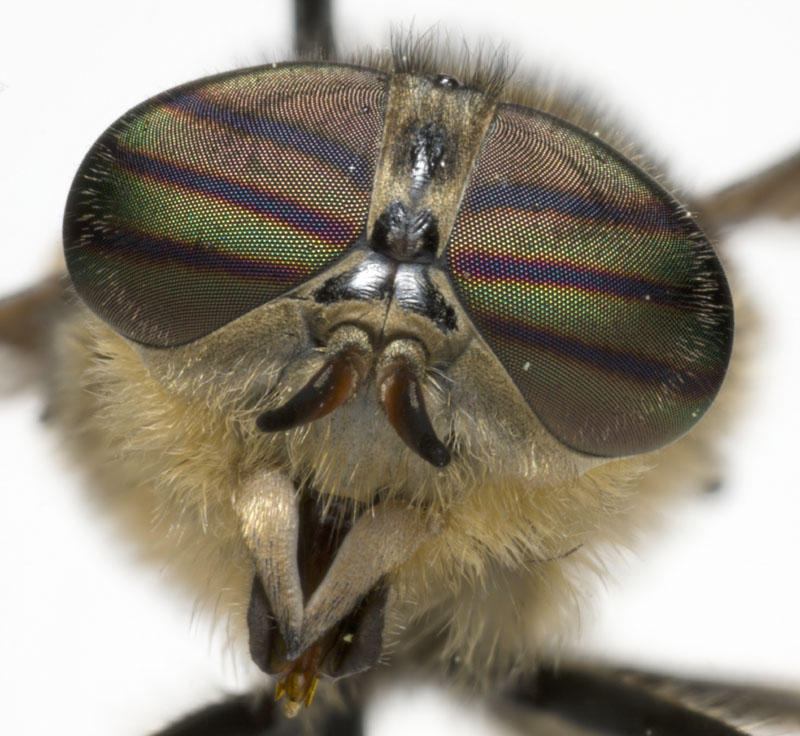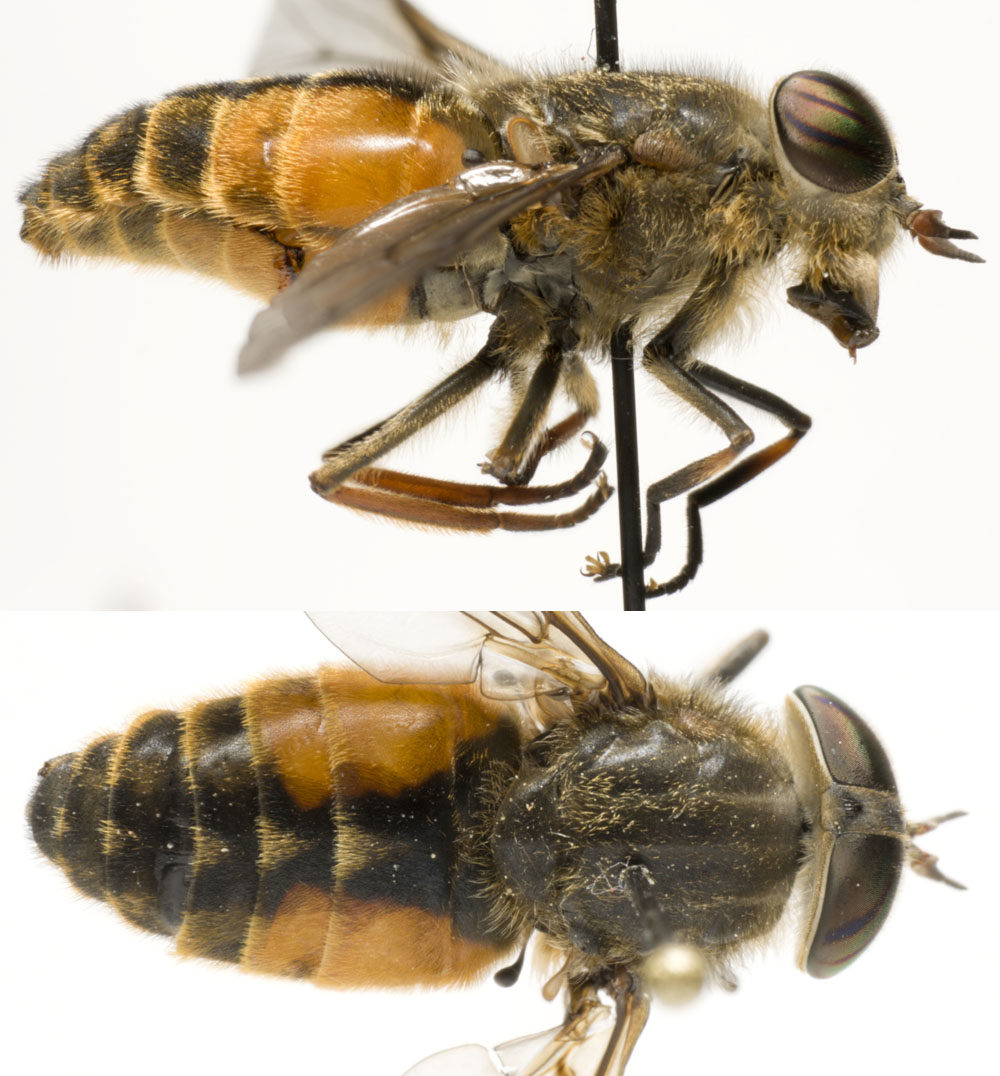Diptera.info :: Identification queries :: Diptera (adults)
|
Pinned Hybomitra nitidifrons confiformis, Tabanidae
|
|
| JariF |
Posted on 29-05-2009 19:13
|
|
Member Location: Helsinki, Finland Posts: 2072 Joined: 20.01.06 |
Hi, I got my first Tabanidae this summer :-) May 29.2009 Loviisa, Finland. Jari JariF attached the following image:  [125.75Kb] Edited by JariF on 19-05-2018 09:46 |
|
|
|
| JariF |
Posted on 29-05-2009 19:14
|
|
Member Location: Helsinki, Finland Posts: 2072 Joined: 20.01.06 |
And here is the rest of this fly.
JariF attached the following image:  [184.96Kb] |
|
|
|
| Zeegers |
Posted on 30-05-2009 09:36
|
|
Member Location: Soest, NL Posts: 19224 Joined: 21.07.04 |
female Hybomitra lurida, the eaarlierst species in the year. It nicely shows the black shining subcallus,characteristic for this species. Theo |
|
|
|
| JariF |
Posted on 30-05-2009 18:37
|
|
Member Location: Helsinki, Finland Posts: 2072 Joined: 20.01.06 |
Thank You Theo for a new Tabanid species to my collection  Jari |
|
|
|
| Tony T |
Posted on 30-05-2009 20:34
|
|
Member Location: New Brunswick, Canada Posts: 664 Joined: 08.02.07 |
Theo: Are you sure? Perhaps H. nitidifrons |
|
|
|
| Zeegers |
Posted on 30-05-2009 20:39
|
|
Member Location: Soest, NL Posts: 19224 Joined: 21.07.04 |
I thought about that. This specimen is unusually reddish for lurida. On the other hand, I have never seen a nitidifrons with such a large amount of black on the subcallus. Though I do agree on second looks the subcallus is not completely shining. SO, no I'm not sure (any more), the specimen is either a very orange lurida or a very shining nitidifrons. You have both species in Canada as well, so any help would be great. Theo |
|
|
|
| Zeegers |
Posted on 31-05-2009 18:04
|
|
Member Location: Soest, NL Posts: 19224 Joined: 21.07.04 |
I looked into it some more: it is a very interesting case. I have 3 females ?lurida from Sweden which are very large and orange. They have all the subcallus completely shining and the frons hardly converging. This case is even more intermediate between lurida and nitidifrons: the frons is distinctly converging, if the pic is not fooling us. And the subcallus is not completely shining, as mentioned before. SO, for the moment, in my opinion a very interesting and intermediate piece. Showing that lurida and nitidifrons, so very distinct in Central Europe, blurr together in Scandinavia. Theo |
|
|
|
| JariF |
Posted on 31-05-2009 18:19
|
|
Member Location: Helsinki, Finland Posts: 2072 Joined: 20.01.06 |
And after the season You will find this nice fly with all the others from Your post office  Then we shall re-open this thread. Interesting, so interesting. Then we shall re-open this thread. Interesting, so interesting.Jari |
|
|
|
| Tony T |
Posted on 01-06-2009 02:36
|
|
Member Location: New Brunswick, Canada Posts: 664 Joined: 08.02.07 |
Zeegers wrote: You have both species in Canada as well, so any help would be great. Theo I have a few specimens of nitidifrons confiformis (identified as conformis) from Norway that are a good match to the above specimen. Also, if the above specimen was collected in North America it would a 100% H.n. nuda. I have not seen any European lurida but all the NA specimens I have seen are very dark on the abdomen, the specimen in the Tabanidae Gallery on this site SEE HERE is typical of NA lurida and as you can see is quite a bit different from the above fly. |
|
|
|
| Zeegers |
Posted on 01-06-2009 09:43
|
|
Member Location: Soest, NL Posts: 19224 Joined: 21.07.04 |
Yes, typical lurida is very different indeed. On the other hand, a very orange bimaculata is very different from a typical one, Lyneborg even described it as colini spec. nov, but still is bimaculata. We would need to rear these flies under different temperatures.... I have rather orange lurida from Europe (though not as orange as this one). As for North America, yes, nitidifrons there has much more black on the subcallus, that is right. In Europe, at least in Central Europe, the black is usually ver restricted. So, I will look into this matter this winter again. Maybe the genitalia will help, but I'afraid not. Theo |
|
|
|
| Kahis |
Posted on 18-05-2018 08:10
|
|
Member Location: Helsinki, Finland Posts: 1999 Joined: 02.09.04 |
This is an ooold thread, but I just found it while searching for some other stuff. I would say this is definitely H. nitidifrons confiformis . It is a very common species in Finland, and usually the first species to appear in the summer (Jaris' specimen in from May, a time when few other species are flying in Finland). The amount of pollinosity on the subcallus varies a lot; this specimen is near the maximum amount of "shine", while at the other end some specimens of H. nitidifrons confiformis have a completely pollinose subcallus. H. lurida is quite different in habitus; it is a small, dark, compact species, one of the smallest Hybomitras (here in Northern Europe) while H. nitidifrons is larger than most. Kahis |
| Zeegers |
Posted on 18-05-2018 14:05
|
|
Member Location: Soest, NL Posts: 19224 Joined: 21.07.04 |
I have seen many more, now, and I totally agree with Kahis. Theo |
|
|
|
| JariF |
Posted on 19-05-2018 09:45
|
|
Member Location: Helsinki, Finland Posts: 2072 Joined: 20.01.06 |
Thank You ! I will rename my specimen. Jari |
|
|
|
| Jump to Forum: |













